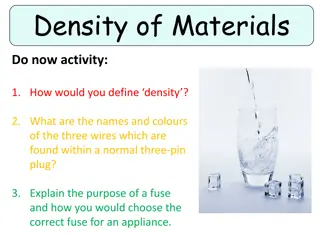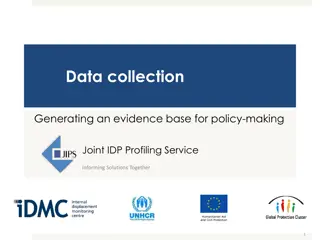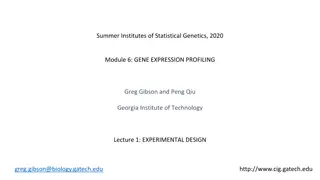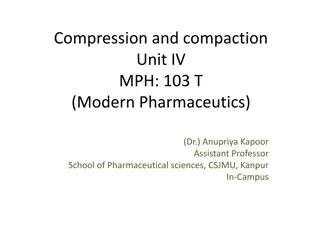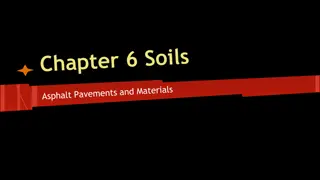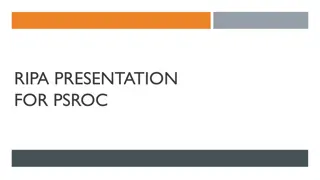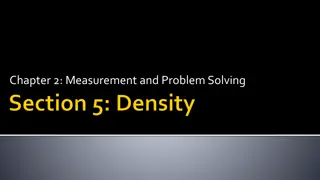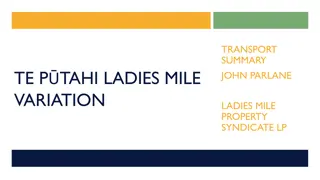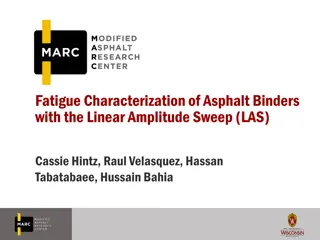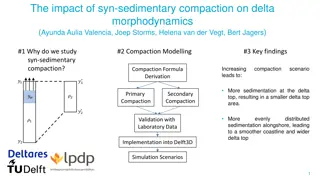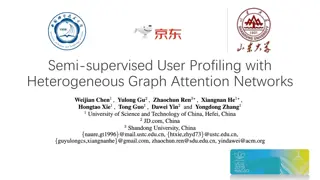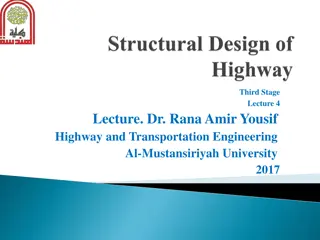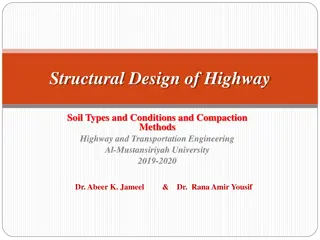Continuous Asphalt Mixture Compaction Assessment Using Density Profiling System
Development of a comprehensive work plan for the assessment of asphalt mixture compaction using the Density Profiling System (DPS). The project aims to create a master database of field and lab measurements, refine protocols for dielectric value-density relationships, propose changes for sensor bias in field measurements, develop data processing tools, and promote DPS implementation. Various tasks include data collection, sensor bias evaluation, correlation analysis, data variability assessment, and tool development. The project timeline outlines key activities from data collection to final report preparation.
- Asphalt Mixture Compaction
- Density Profiling System
- Data Analysis
- Protocol Development
- Quality Assessment
Download Presentation

Please find below an Image/Link to download the presentation.
The content on the website is provided AS IS for your information and personal use only. It may not be sold, licensed, or shared on other websites without obtaining consent from the author. Download presentation by click this link. If you encounter any issues during the download, it is possible that the publisher has removed the file from their server.
E N D
Presentation Transcript
TPF 5(443) Continuous Asphalt Mixture Compaction Assessment using Density Profiling System: Protocol Review, Statistical Analysis, and Technical Brief Development Workplan Jo E. Sias, Eshan V. Dave and Anh Tran University of New Hampshire Adam Hand University of Nevada, Reno
Motivation and Objectives Substantial amount of data on field sections has been collected as part of the pooled fund effort Data review and analysis to propose changes to the current protocols Routine implementation as a quality assessment tool. Objectives: Development of a master database of DPS field and lab measurements Development/refine protocol for determining the relationship between dielectric values and density for a mixture Recommended changes to the current DPS field measurement protocols to account for sensor bias and data variability Development of a data processing tool to process the field measured dielectric data gathered using the DPS equipment Develop materials to promote the implementation of DPS methods and protocols 2
Tasks (1/3) 1. Collection and Organization of DPS Data Database development Data quality checks Statistical checks on collected data (outlier analysis) 2. Evaluation of Sensor Bias for Field Dielectric Measurements Develop acceptance criteria and checks to address sensor bias Using statistical testing of data from swerve, transverse line and other strategies Outcomes to inform the field measurement protocol requirements 3
Tasks (2/3) 3. Correlations between lab and field dielectric measurements Correlate: Field (surface reflection) vs. Lab (time of flight) Multilevel analysis: Specimen, lot, project Protocol on laboratory procedure for developing dielectric vs. density curves (number of measurements, number of specimen etc.) Leverage on-going NCHRP IDEA study 4. Data Variability Analysis and Measurement Extent Recommendations Identify variables that can cause systematic differences (transverse vs. longitudinal direction, joint vs. middle of mat, moisture, sensor height..) Identify variables that require categorization prior to measurement and corresponding trigger points to require a core Statistical analyses (e.g. moving window averaging) to propose necessary extent of coverage for QA process use Required frequency of accuracy checks to validate calibration curve 4
Tasks (3/3) 5. Development of Data Processing Tool Formalize sensor bias detection, field data variability measures, accuracy check triggers into a single Excel based tool 6. Draft Specification and Implementation Tools 7. Final Report Calendar Month Task 1: Data Collection Task 2: Sensor Bias Task 3: Lab to Field Correlation Task 4: Data Variability Analysis Task 5: Data Processing Tool Task 6: Draft Specification and Implement. Materials Task 7: Final Report Jan Feb Mar Apr May Jun Jul Aug Sep Oct Nov Dec 5
NCHRP IDEA STUDY: Lab Dielectric Measurement System Objectives: Impact of the specimen geometry, asphalt mixture variables, and surface conditions on the measured dielectric constant Repeatability of the measured dielectric constant in the laboratory Refine the calibration procedure and methodology for laboratory measurement Establish the relationship between laboratory measured dielectric constant and bulk specific gravity Develop a draft AASHTO test specification for laboratory dielectric measurement 6
Project Tasks Stage 1: Establish measurement reliability and draft test procedure Task 1: Select study materials and gather mix information Task 2: Collect materials (16 mixtures) Task 3: Specimen fabrication and testing Task 4: Statistical analysis of results and draft procedure Stage 2: Develop relationship between dielectric value and bulk specific gravity Task 5: Dielectric measurement of component materials Task 6: Develop relationship using machine learning Task 7: Reporting and final deliverables 7
Extensive LDMS Testing A total of 160 measurements collected at various orientations on both faces of each specimens 5 measurements per orientation 8
Preliminary Findings As the air void content increases, dielectric measurement decreases, and measurement variability increases for tested mixture type Statistical analysis to study measurement repeatability at different orientations and among grouping of measurements of various orientations Preliminary finding has shown that five measurements at each of any three orientations 120 degrees apart (15 measurements total) on any of the specimen face provide representative average of whole specimen for tested mixture type 10
Thank you for your attention! Questions and Comments?



